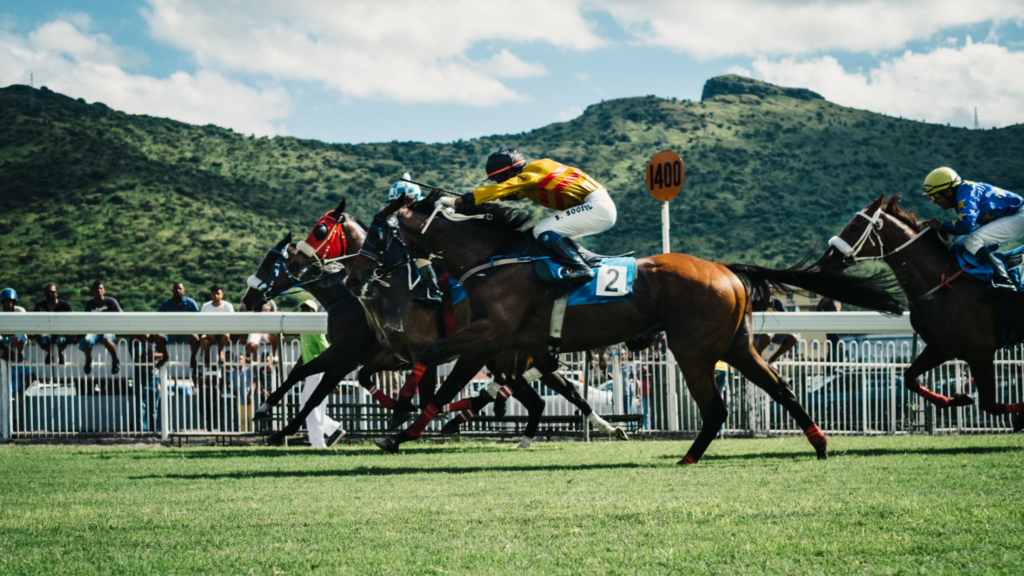When it comes to the Triple Crown, the Kentucky Derby and Belmont Stakes often steal the spotlight, but the Preakness Stakes has a character all its own. As the second leg of the series, it brings unique challenges for both horses and bettors alike. While it shares the prestigious Triple Crown status, key differences make betting on the Preakness a distinct experience. What makes this race stand out from the Derby and Belmont? Let’s dive into the factors that set the Preakness apart and make it a fascinating race to bet on.
Race Distance
The distance of a race plays a significant role in shaping the strategies horses use and the betting odds, and the Preakness Stakes stands out due to its unique distance of 1⅜ miles (9.5 furlongs). While the Kentucky Derby and Belmont Stakes are longer, the Preakness’s shorter distance often leads to a faster-paced race, making speed a crucial factor.
Unlike the Derby, which at 1 ¼ miles (10 furlongs) allows horses to settle into a rhythm gradually, the Preakness demands a quicker start and a sustained burst of speed. Horses breaking from the gate quickly and maintaining a fast pace throughout the race have a clear advantage.
The shorter distance also means the Preakness is more about tactical positioning than pure endurance. In the longer races of the Triple Crown, like the Belmont Stakes at 1 1⁄2 miles (12 furlongs), stamina becomes a key component as horses need to maintain their speed over a greater distance.
But in the Preakness, where the margin for error is smaller, the ability to accelerate and sustain that pace for a slightly shorter time can make all the difference. For bettors, identifying horses with excellent speed and quick acceleration is key. The Preakness favors horses that can execute well-timed, tactical runs, creating different opportunities than the Derby and Belmont. Understanding which horses can handle this speed is key for bettors, and the odds can indicate which horses are expected to be the fastest. If you want more information on the odds, check out FanDuel.
Field Size
The field size in the Preakness Stakes plays a significant role in how the race unfolds and sets it apart from the other Triple Crown races. Unlike the Kentucky Derby, which has a large field of up to 20 horses, the Preakness typically features a smaller field, with only 14 horses.
This smaller field results in less crowding on the track, allowing jockeys more room to maneuver and reducing the risk of interference. The smaller field makes the race more tactical, as horses can more easily find their positions and avoid the chaos that often comes with a larger group of runners.
In contrast, the Kentucky Derby’s large field creates a more complicated race strategy, with jockeys having to navigate through heavy traffic and handle the unpredictability of many horses in close quarters. The Belmont Stakes, with a field size between 12 and 16 horses, also presents challenges, especially considering the longer distance. In comparison, the Preakness’s smaller field makes it easier for bettors to assess the dynamics of the race.
With fewer horses to focus on, the Preakness provides a clearer view of each contender’s potential, making it a more straightforward race to analyze.
Timing and Recovery
The timing of the Preakness Stakes is one of the race’s defining factors, and it presents unique challenges for both horses and trainers. Held just two weeks after the Kentucky Derby, the Preakness comes when many horses still recover from the intense physical exertion required at Churchill Downs.
This quick turnaround can significantly impact the horses’ performance, as the shorter recovery period pressures their stamina and overall well-being. In contrast, with its three-week gap after the Preakness, the Belmont Stakes offers horses a much more extended rest period, which can be crucial for those needing extra time to regain strength and fitness.
For horses that ran in the Kentucky Derby, the short time between these two races means that some may still feel the effects of their Derby run. While some horses recover quickly and can handle the demands of the Preakness, others may struggle to perform at their peak due to lingering fatigue or soreness.
The physical toll of running in the Derby—especially on a horse that pushed hard for victory—can leave them less than 100% for the Preakness, impacting their overall performance. This factor adds unpredictability for bettors, as it’s hard to gauge how well a horse will recover quickly.
Given this compressed schedule, some trainers skip the Preakness altogether, instead choosing to rest their horses in preparation for the Belmont Stakes. This decision can shift the dynamics of the Preakness field, as trainers weigh the risks of pushing their horses too hard, too soon.
In 2025, the Kentucky Derby winner, Sovereignty, will not compete in the Preakness, eliminating any chance of a Triple Crown bid. This absence opens the door for fresh contenders, making the betting picture even more uncertain. With less clarity on which horses will come into the race fully prepared, the Preakness becomes a bit of a wildcard, with recovery times playing a pivotal role in shaping the outcome.
Closing Remarks
The Preakness Stakes is much more than just the second leg of the Triple Crown. With its faster pace, smaller field, and short recovery time between the Kentucky Derby and the Belmont Stakes, the race offers unique challenges and betting opportunities. While the Kentucky Derby may be known for its spectacle and the Belmont Stakes for its demanding distance, the Preakness offers a different kind of excitement—one defined by speed, strategy, and the thrill of the unknown.


 At the helm of SmartGambleFactor is Calvino Hancockster, the founder and driving force behind the platform. With a deep-rooted passion for betting and years of hands-on experience, Calvino established this blog as a resource to share his knowledge and expertise with the broader betting community. His mission is to demystify the complexities of the gambling world and offer actionable advice that can lead to more successful wagers. By creating SmartGambleFactor, Calvino hopes to foster a community of informed and responsible bettors who can benefit from reliable and insightful guidance.
At the helm of SmartGambleFactor is Calvino Hancockster, the founder and driving force behind the platform. With a deep-rooted passion for betting and years of hands-on experience, Calvino established this blog as a resource to share his knowledge and expertise with the broader betting community. His mission is to demystify the complexities of the gambling world and offer actionable advice that can lead to more successful wagers. By creating SmartGambleFactor, Calvino hopes to foster a community of informed and responsible bettors who can benefit from reliable and insightful guidance.

